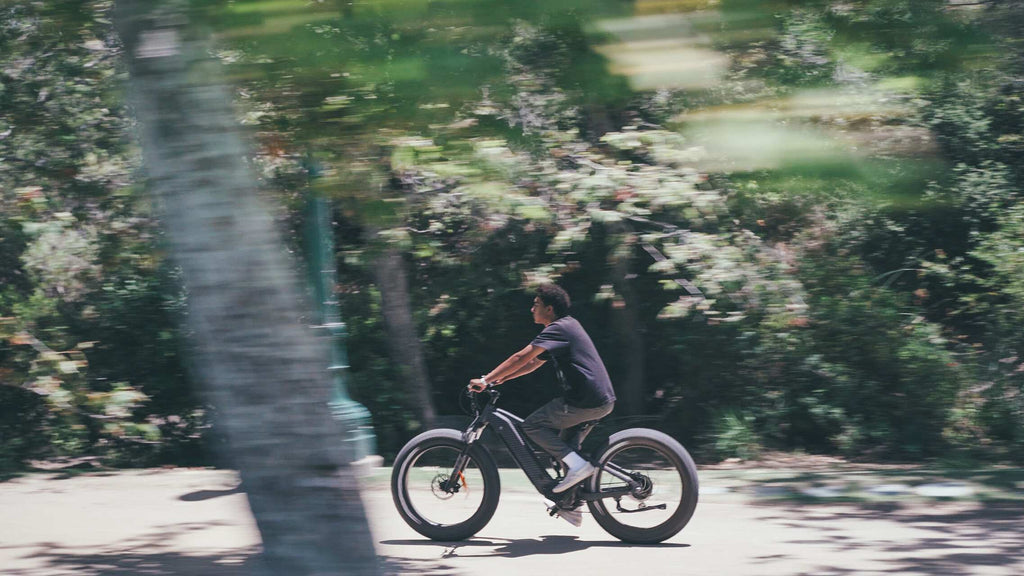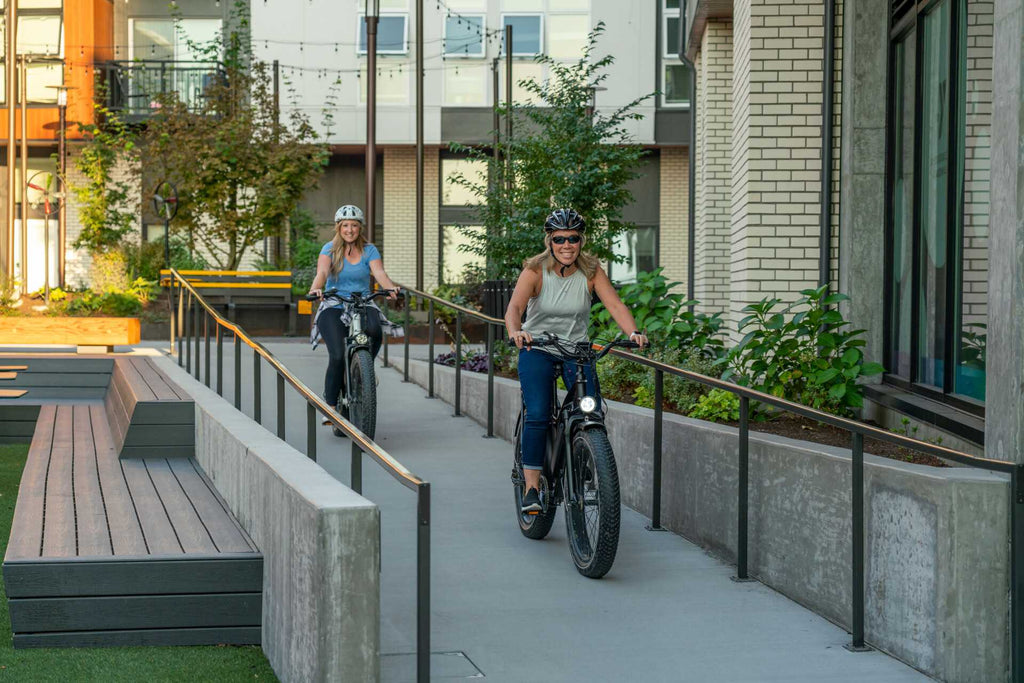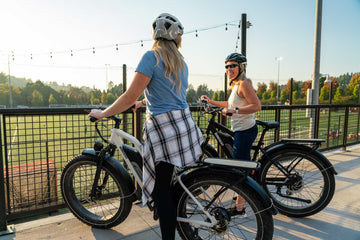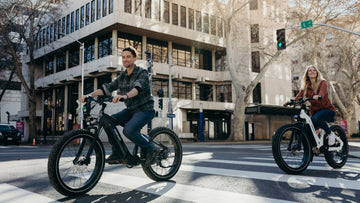Occasionally, you hear the saying, "You get what you pay for." Everyone wants a good deal on an e-bike, but sometimes, the actual value goes beyond just the price tag. It's quite easy to get overwhelmed by the range in electric bike costs. Prices vary significantly from budget-friendly models advertised online to high-tech marvels at your local bike shop. But before you jump at the seemingly "too-good-to-be-true" deal, you should know what factors influence the price tag. This helps you to make a wiser investment.
While a low-priced e-bike may initially seem like a bargain, it could cost you more in the long run. A budget-friendly e-bike may use lower-quality materials for the frame, brakes, and shifters, which would wear down faster. In contrast, a higher-priced e-bike would have better components, making it more durable.
Factors Influencing the Cost of E-bikes.
Don't be fooled by seemingly "cheap" deals—the true cost of an e-bike goes far beyond the initial sticker price. Let's examine key factors influencing e-bike pricing to get the best value for your hard-earned cash.
Component Quality
Just like a house on a solid foundation, the quality of an e-bike's components is the groundwork for its price and performance. Let’s start with the frame, which is more of a backbone for your e-bike. Aluminum is a popular choice for its balance of affordability, weight, and durability. E-bikes like the Himiway Cruiser (known for its budget-friendliness) have aluminum frames.
Steel is renowned for its strength and sturdiness; steel frames are ideal for heavier riders or tackling rough terrain. Carbon Fiber is the lightest and stiffest option. It offers a premium ride feel but comes at a higher price. This material is often found in high-performance e-bikes. An example of carbon fiber e-bikes is the latest addition to the Himiway lineup of e-bikes, the “X5 Pro, X5 Ultra.”

Motor
Now that we've established the foundation of component quality, let's shift gears to the motor and battery. E-bike motors come in two main varieties: the “Hub motor and the Mid-Drive motor” The hub motor is located in the front or rear wheel; hub motors offer a simpler design and lower upfront cost. However, they can feel less natural when pedaling due to a dragging sensation and might struggle with steeper inclines. On the other hand, the mid-drive motor is usually found in higher-end e-bikes, such as the 250W mid-drive motor on the Himiway A7 Pro. Mid-drive motors are integrated into the frame near the pedals. This placement provides a more balanced ride feel but with a downside: A higher price tag.
Battery and Range
The power output of an e-bike motor is measured in watts (W). Generally, higher wattage means a more powerful motor. This increased power comes at a cost, with higher wattage motors typically found in pricier e-bikes. Battery capacity, measured in watt-hours (Wh), determines the range you can achieve on a single charge. Think of it as the fuel tank of your e-bike. Larger batteries with higher Wh ratings will give you a longer range, allowing you to ride longer distances before recharging. Naturally, these higher-capacity batteries come with a premium price tag.
Safety Features
With e-bikes reaching higher speeds than traditional bikes, you must also invest in proper safety features. While these features can contribute to a higher price tag, consider them an investment in your well-being. E-bikes are not confined to daylight hours. Whether commuting after dark or enjoying a sunset cruise, you must have integrated lights to see and be seen. High-quality headlights and taillights allow you to ride safely in low-light conditions.
Traditional rim brakes, found on budget-friendly e-bikes, rely on squeezing the wheel's rim to slow down. However, their effectiveness is reduced in wet conditions, and they can need help with the increased stopping power required for heavier riders or e-bikes with powerful motors. Hydraulic disc brakes, on the other hand, give you better stopping power in all weather conditions. These brakes utilize hydraulic fluid to transmit pressure to the calipers, providing a more controlled and responsive stopping experience. While adding to the cost, hydraulic disc brakes are a worthwhile investment for enhanced safety, especially considering the higher speeds achievable with e-bikes.

Finding Your Perfect E-bike
Your goal in getting the perfect e-bike is to balance affordability and value. This will help you get the most out of your investment. To achieve this goal, you need to:
Set a Budget
Establish a realistic budget based on your priorities. Remember, the cheapest option might not be the wisest investment in the long run. While staying within budget is important, prioritize quality components and safety features like hydraulic disc brakes and integrated lights, even if it means compromising on certain non-essential features.
Research
With a clearer picture of your needs and budget, you should gather as much information as possible to make an informed decision. Online resources like Himiway’s website can help you gain enough knowledge and make comparisons. Don't underestimate the power of visiting your local e-bike shop. Knowledgeable staff can answer your questions, recommend suitable models based on your needs, and arrange a test ride.
Weight and Portability
Weight is important, especially if you plan to lift your e-bike regularly (e.g., storing it in an apartment building or transporting it on public transportation). While heavier e-bikes might offer more powerful motors and larger batteries, lighter models are easier to maneuver and transport. Consider your needs and physical capabilities when evaluating weight and portability.
E-bike Size and Fit
A well-fitting e-bike goes beyond just feeling good. It impacts your ride. The right size prevents back pain, neck strain, and wrist fatigue. It also allows for proper pedaling technique, maximizing power transfer and efficiency. An appropriately sized frame also ensures you can comfortably reach the handlebars and brakes, allowing for confident maneuvering and safe stopping. Here are some critical factors in getting the right e-bike fit:
- Body Measurements: Your height and inseam are the primary factors determining the ideal frame size. A rightly sized e-bike lets you comfortably straddle the frame with your feet flat on the ground.
- Riding Style: You also need to consider your preferred riding position. Your riding style influences the optimal frame geometry (e.g., handlebar height and seat angle).
- While this is not always the case, slight price variations across different frame sizes may exist. Additionally, if a larger or smaller frame requires adjustments like a different handlebar stem or seat post, these customizations can add to the overall cost.
Conclusion
E-bikes come in a wide range, and a cheap one might cost you more in repairs and frustration. The quality of its parts, like the frame, gears, and brakes, affects how well it rides and lasts. More powerful motors and bigger batteries will let you conquer hills and travel farther on a single charge, but they'll also bump the price.
Remember, there are costs beyond the initial purchase. You should factor in insurance, charging fees, and a safe place to park your new e-bike. Remember to budget for maintenance and repairs as well. The most expensive e-bike is only sometimes the best. The best one is the one that gives you the most value and makes every ride enjoyable.





























